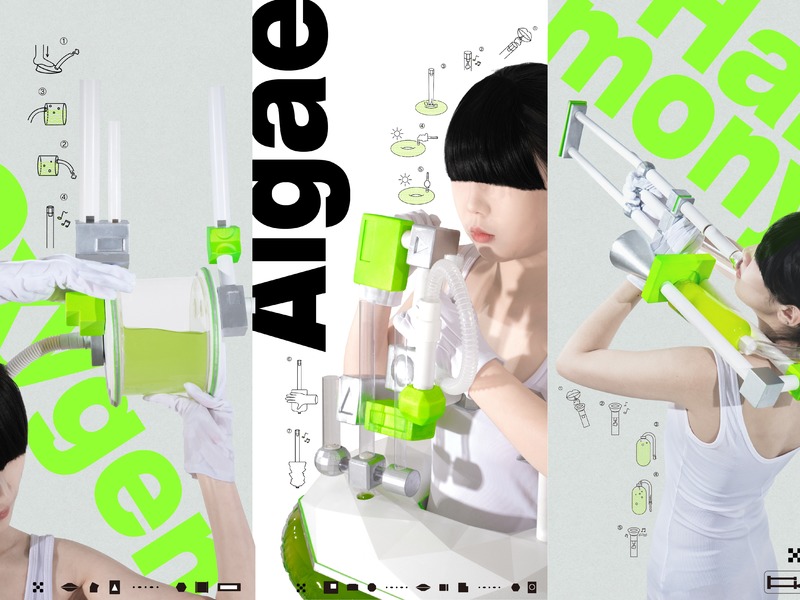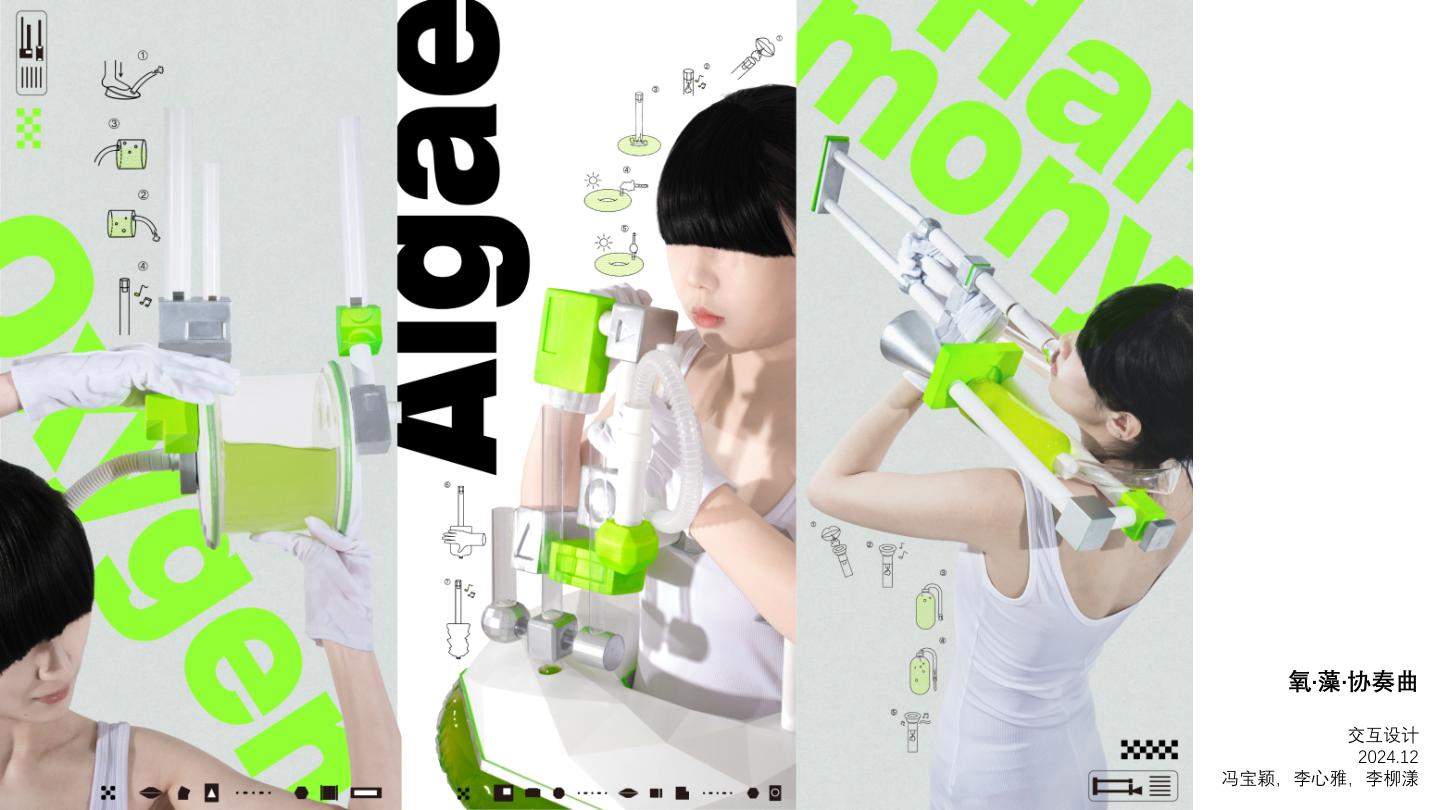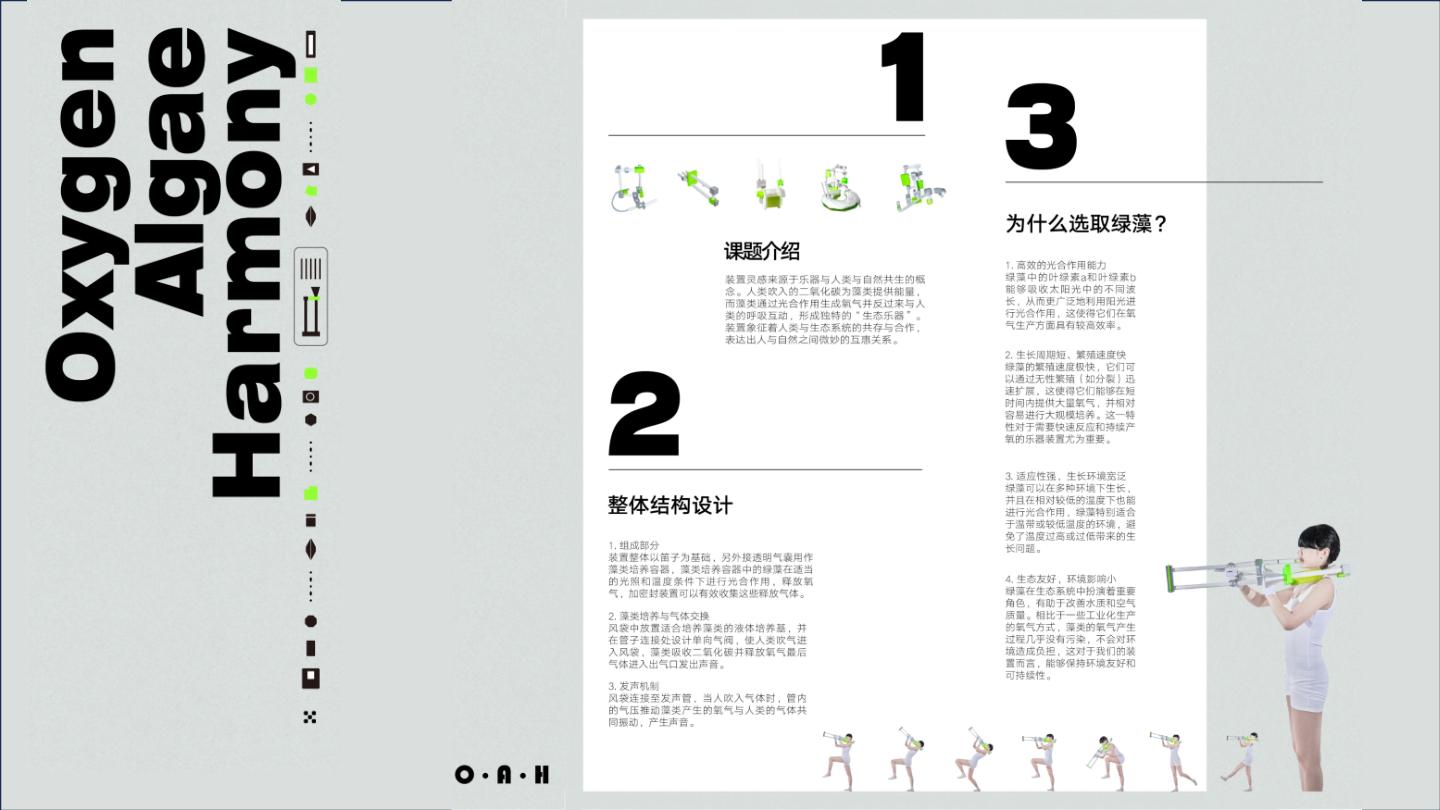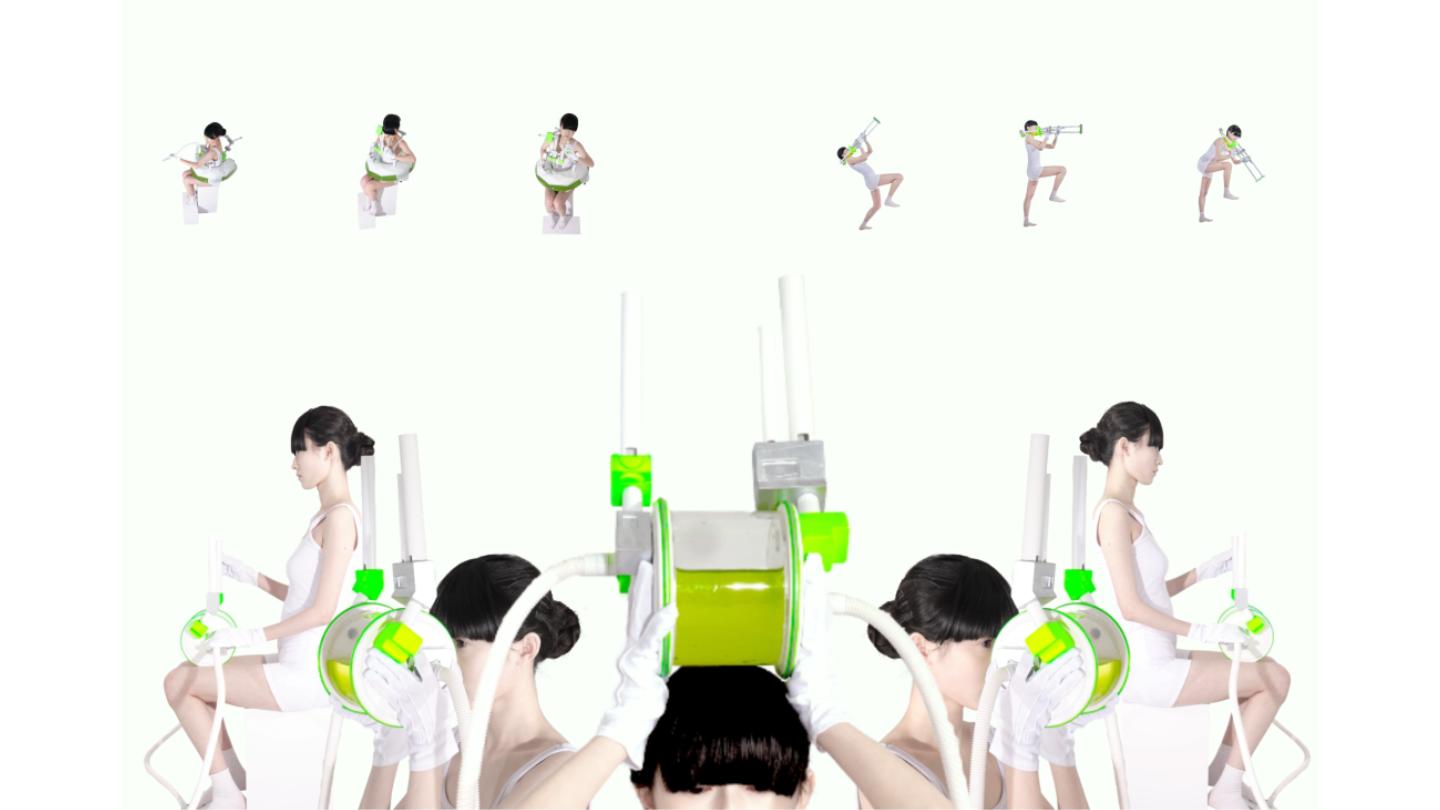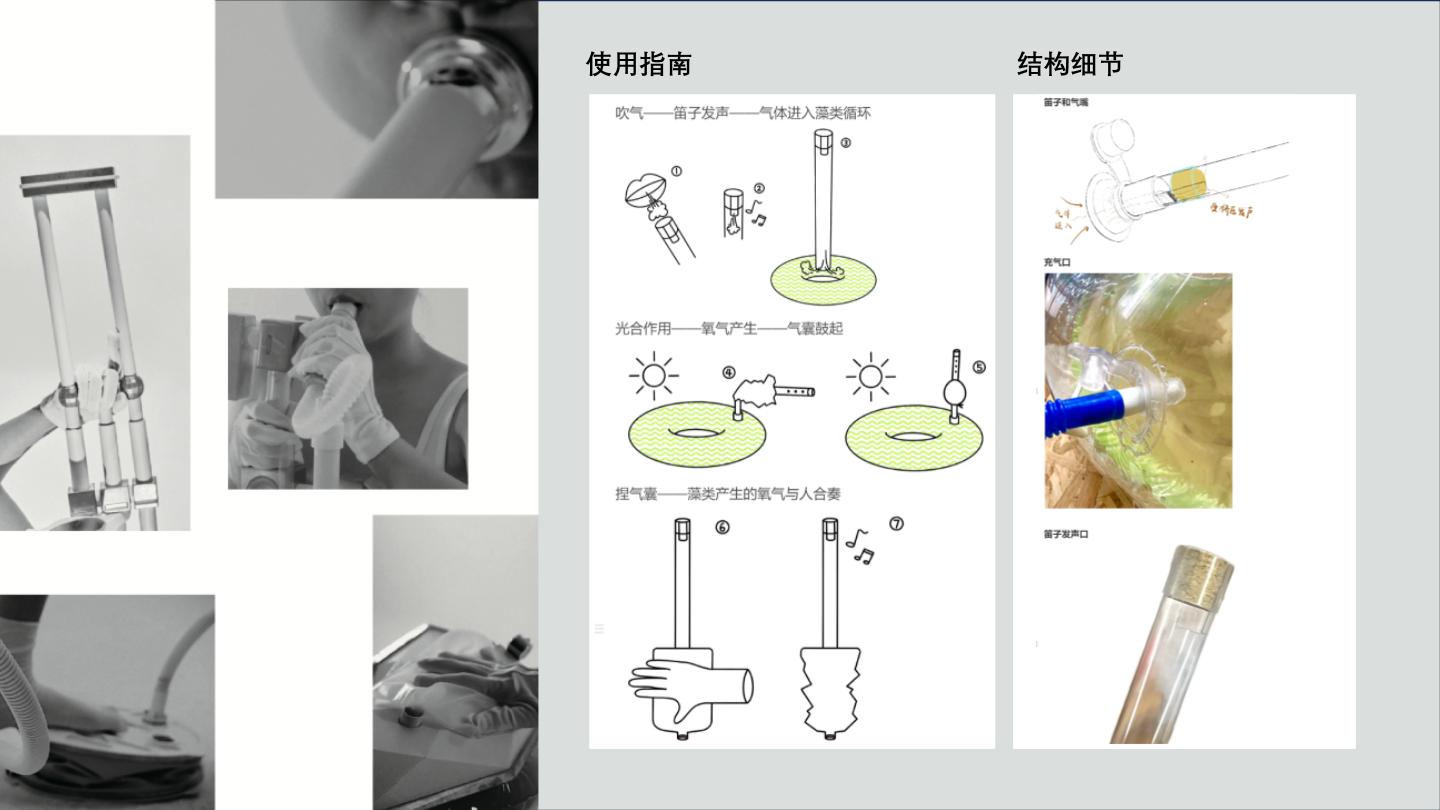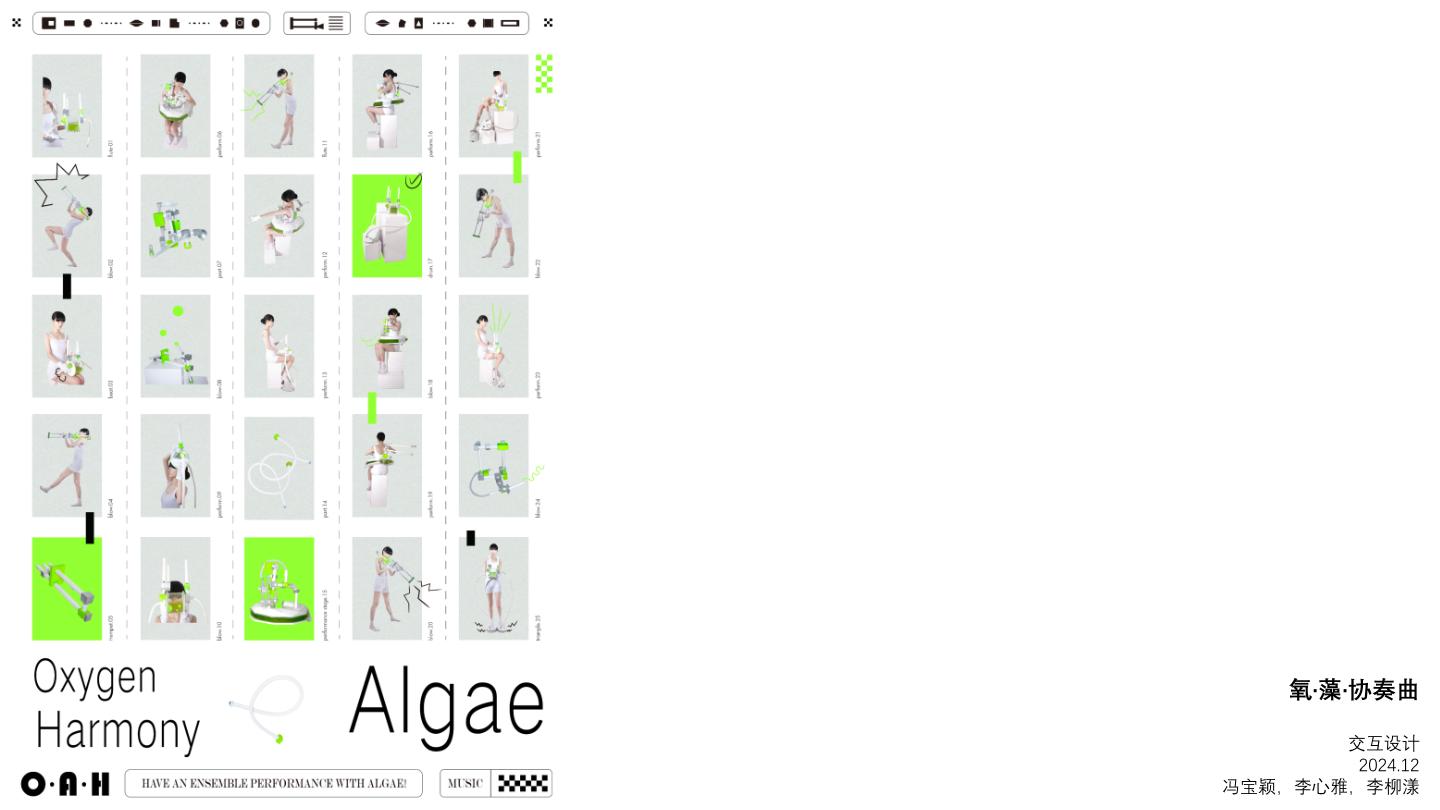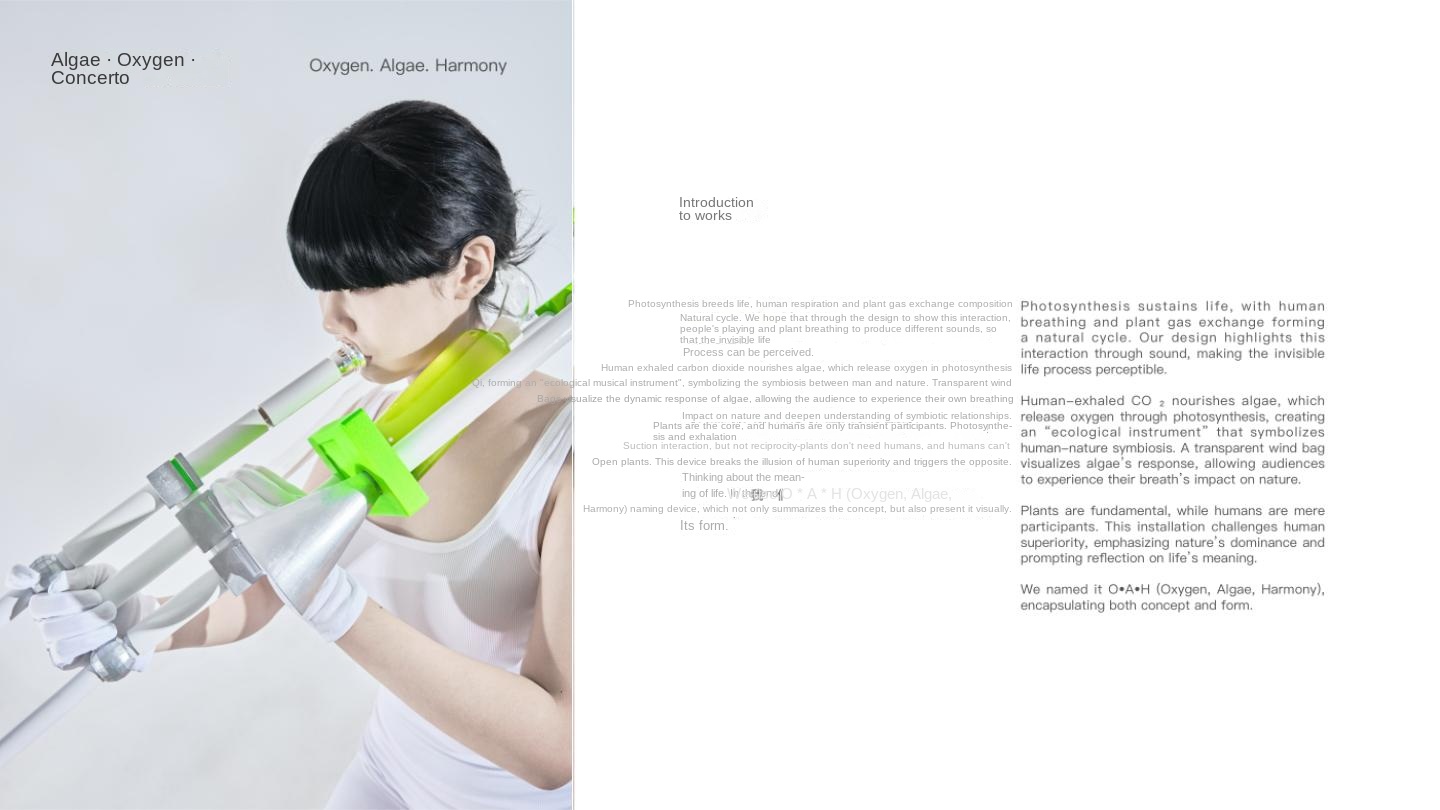O·A·H
We used three letters to represent our device -0 · A · H, which are Oxygen (oxygen),Algae (algae), and Harmony (harmony). At the same time, these three letters also show the device visually.
The video shows the detailed modeling and interaction of the algae musical instruments. The sounds of the three algae musical instruments are also made into the background music of the video through post-adjustment.
Detailed Works Scheme
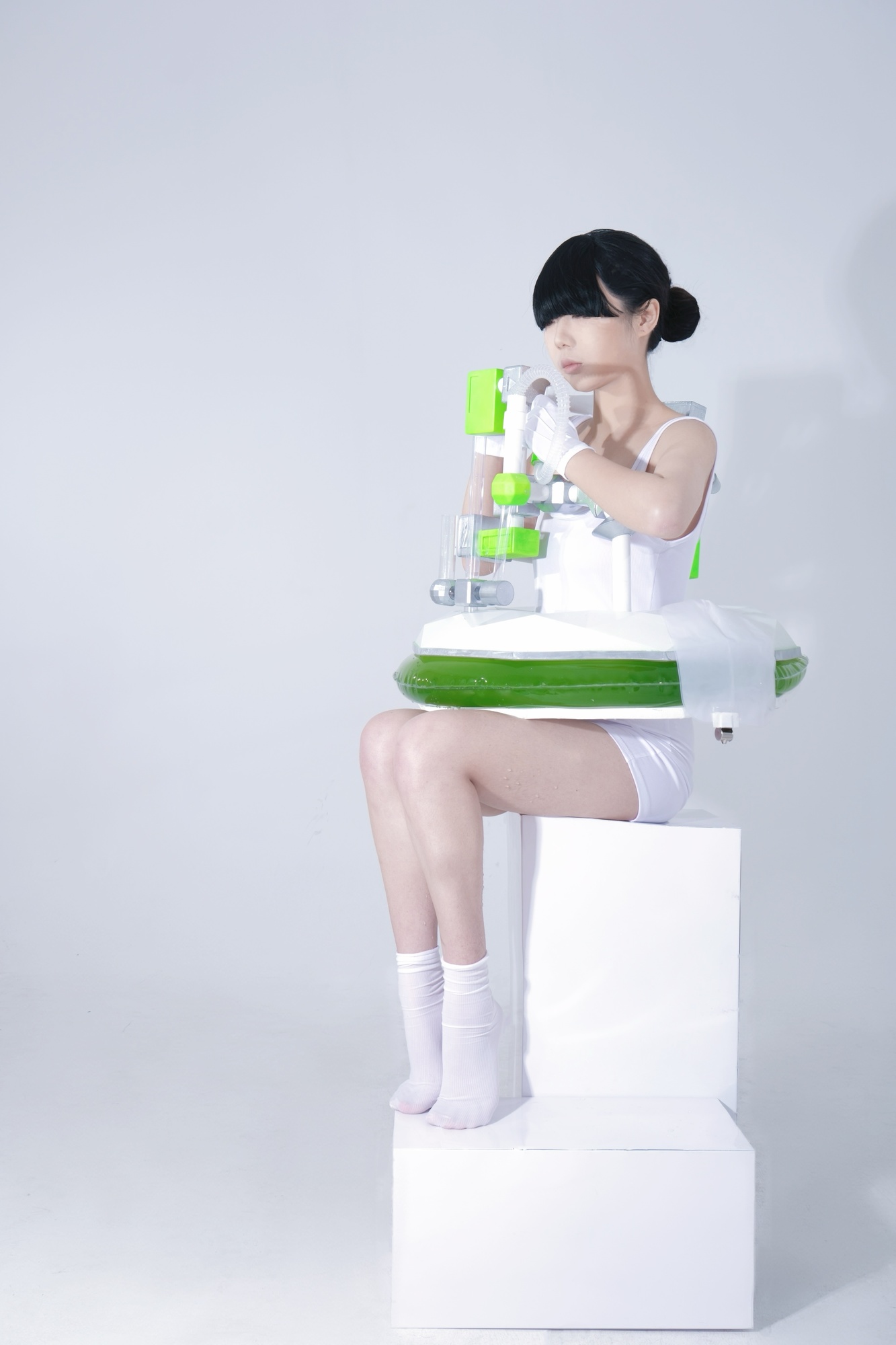
Device A.1
Device H.1
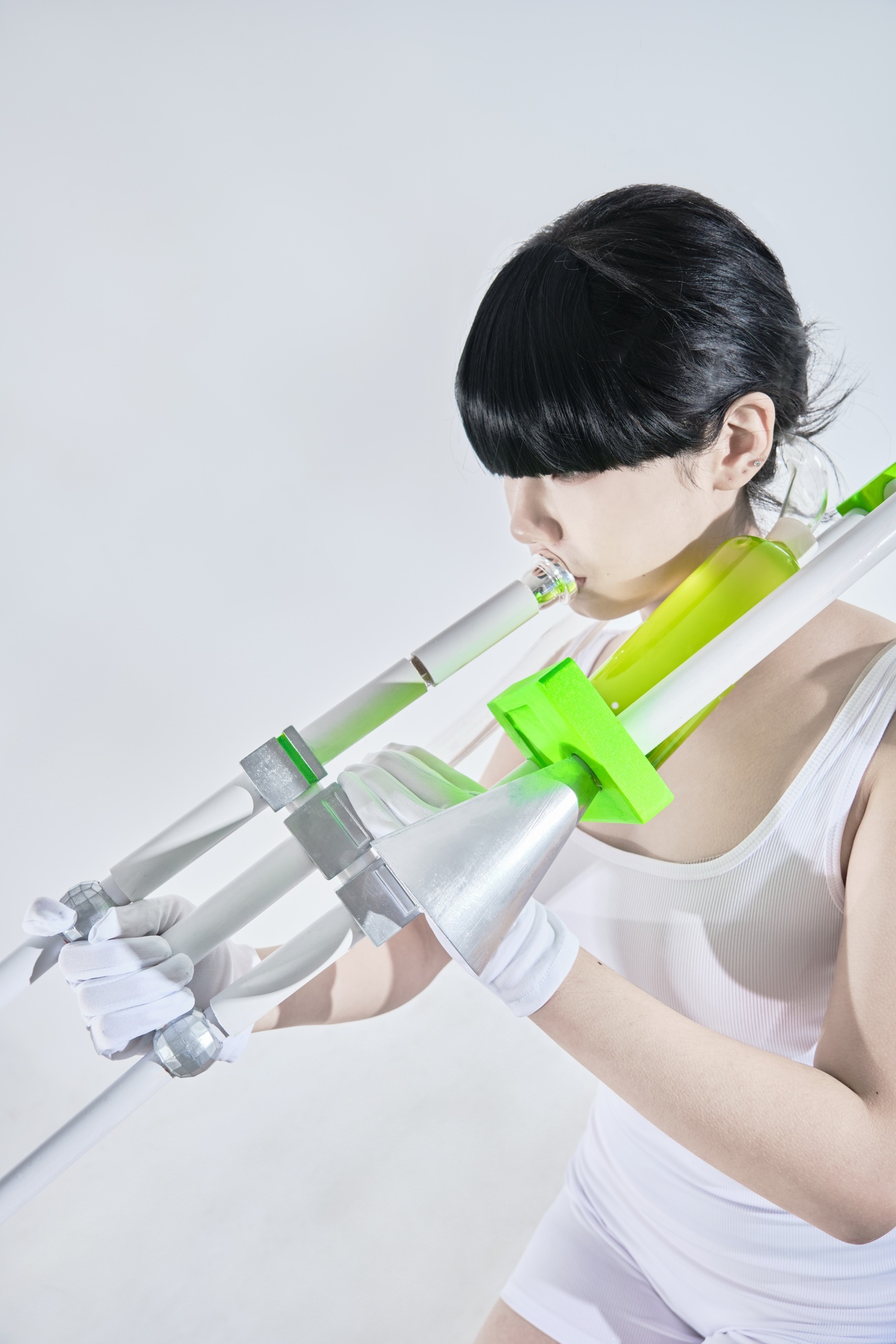
Device H.2
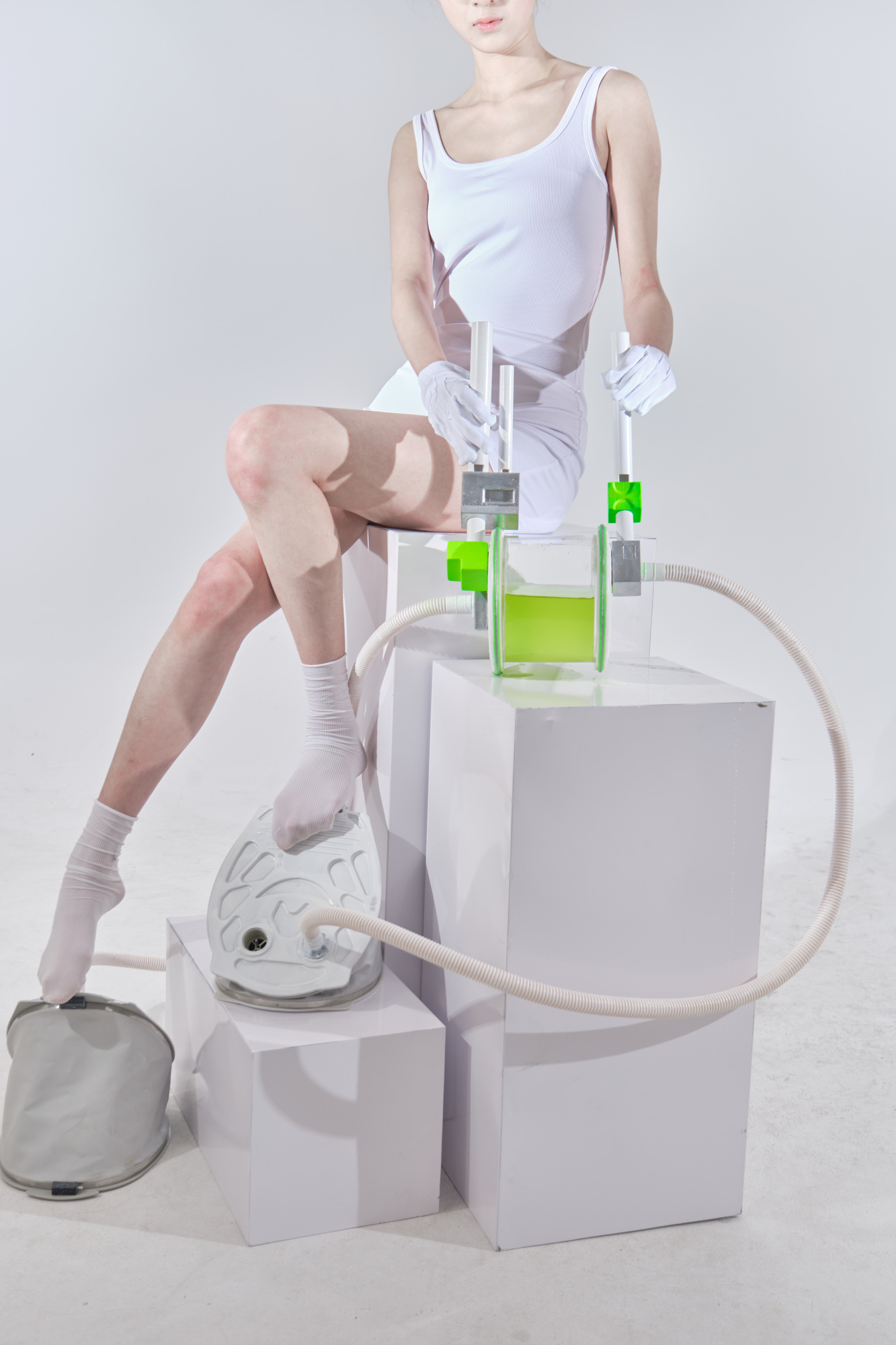
Device O.1
Photosynthesis is the origin of all life, and human respiration participates in the gas exchange of plants, which together constitute a cycle of relationship between man and nature. We want to try to express the interaction between the two in the design, through the human breath and plant breath to deduce it. The breathing of plants and the blowing of people will produce different sounds, allowing the invisible process to be heard.
The carbon dioxide blown by humans provides energy for algae, and algae generate oxygen through photosynthesis and in turn interact with human breath, forming a unique "ecological instrument". This symbolizes the coexistence and cooperation between humans and ecosystems, and expresses the subtle reciprocal relationship between humans and nature. Through the interactive experience of musical instrument playing, the audience can understand the concept of natural symbiosis. The transparent wind bag allows the audience to observe the dynamic response of algae photosynthesis, and at the same time visualize the process of blowing, so that people can feel how their breathing affects the life activities of algae. This interaction is not only a sensory experience, but also an exploration of the integration of man and nature. People are not necessary in this relationship, but plants are. In the self-contained cyclical forces of nature, we can only be part of the system as transient participants. Human respiration and plant photosynthesis, as two life processes, interact through devices, but the two are fundamentally unequal: plants can survive without humans, while humans cannot continue without plants. This suggestion of the dominance of nature breaks the illusion of human superiority and re-examines the meaning of life and the value of existence.
Finally, we used three letters to represent our device -0 · A · H, respectively, Oxygen (oxygen),Algae (algae),Harmony (harmony), and these three letters in the visual form also shows the device.
The "O · A · H" ecological musical instrument device is based on the flute, combined with a transparent airbag and a one-way valve system to construct a two-way breathing interaction between humans and algae. The audience injects carbon dioxide into the transparent wind bag by blowing air, triggering the photosynthesis of green algae to generate oxygen, and the gas vibration is converted into audible "harmony" through the sound tube ". The device uses transparent and environmentally friendly materials to visually present the dynamic growth of algae and the process of gas exchange, transforming the invisible ecological cycle into a perceptible audio-visual experience. Green algae is selected as the core medium because of its high photosynthetic capacity, rapid reproduction and environment-friendly characteristics, which not only ensures the continuous operation of the device, but also echoes the sustainable concept of low energy consumption and pollution-free. Through the blowing behavior, the audience directly participates in the natural cycle, perceives the influence of human breathing on the life of algae, breaks the one-way expression of traditional musical instruments, and realizes the deep integration of ecology and art.
The installation is rooted in China's philosophy of "harmony between man and nature". It interprets the symbiotic relationship between man and nature in an interactive form, echoing the awe of ecological balance in traditional culture. The efficient carbon fixation and oxygen release function of green algae is in line with China's "double carbon" goal, and its ecological restoration characteristics map the current environmental management needs. The design of the transparent windbag is inspired by the simple aesthetics of the traditional bamboo flute, while incorporating modern biotechnology, reflecting the interweaving of old and new technologies. By visualizing respiratory interactions, the device challenges anthropocentrism and emphasizes the dominance of nature-plants survive independently of humans, while humans rely on plants for survival, thus warning the need for ecological protection. This design is not only an innovation of traditional craftsmanship, but also uses artistic language to promote public participation in environmental protection issues, and provides a concrete practical sample for China's sustainable design.
"O · A · H" constructs a dialogue across science, art and philosophy with innovative forms of biological interaction and localized design language. Through the dynamic balance of respiration and photosynthesis, it reveals the insignificance and dependence of human beings in the natural system, and awakens ecological consciousness with audible and visible sensory experience, which opens up a poetic and rational path for exploring sustainable design in the Chinese context.
The three members of the group are all third-year undergraduate students of the Intelligent Body Studio of Art and Technology Major of China Academy of Art.







